Exploring Treatment Options for Short Sightedness
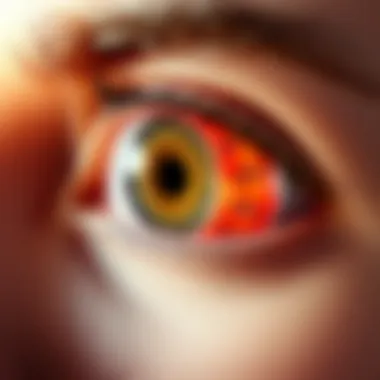
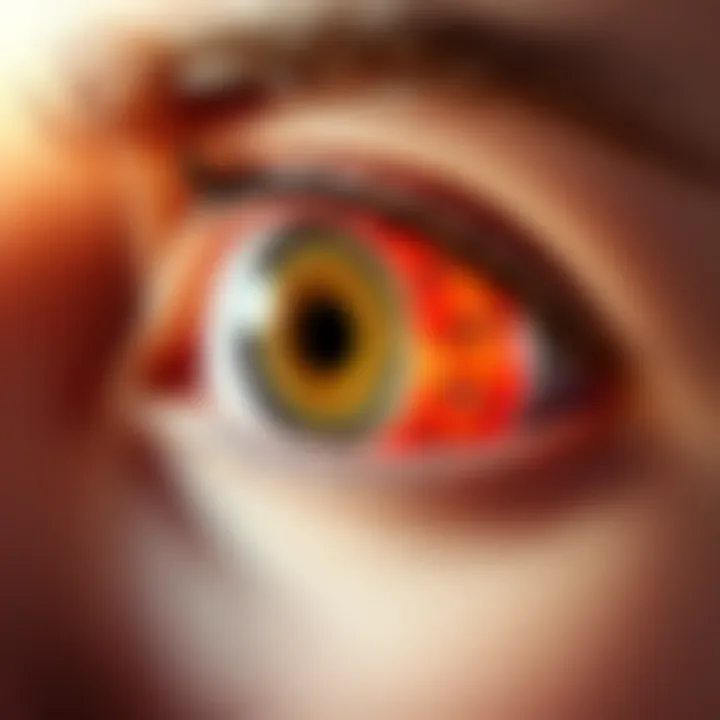
Intro
Short-sightedness, or myopia, is a condition that many people deal with at various points in their lives. It's that pesky trouble with seeing distant objects clearly, which can sometimes make it feel like you’re standing on the wrong side of a thick glass. This refractive error often develops during childhood and, for some, sticks around like an unwanted guest. The journey of understanding myopia is not just crucial for those who wear glasses or contact lenses, but for anyone interested in the broader picture of vision health.
Understanding myopia involves looking into how the eye functions, the role of heredity, and environmental factors that can influence its prevalence. Recent discussions have highlighted how lifestyle choices and screen time might be at play, suggesting that this isn’t just a genetic issue anymore. As we peel back layers of research, the conversation shifts from mere acknowledgment of the condition to delving into innovative and traditional treatment options available today.
Overview of Research Topic
Brief Background and Context
As one of the most common eye conditions in the world, myopia is shaping how we approach vision correction. Uncommon a few decades ago, myopia rates have soared, particularly among school-aged children in urban settings. It brings a hefty load, not just physically for those who need glasses, but emotionally and socially, as many struggle to engage fully in activities that require clearer vision. Want to know the numbers? In several countries, nearly half of the young population is now short-sighted.
Importance in Current Scientific Landscape
The discussion around myopia is timely and of enormous relevance. The eye care community is taking the surprising rise in myopia rates quite seriously. Numerous studies are being conducted to get to the bottom of not just the how but the why behind this increase. Myopia leads to greater risks for serious eye diseases later in life, such as retinal detachment and glaucoma, making effective treatment options more critical than ever.
“With myopia on the rise worldwide, it no longer remains a simple vision issue; it’s a significant public health concern that demands our attention.”
To navigate this landscape lays the groundwork for a multitude of treatment options, each varying based on an individual’s age, degree of myopia, and lifestyle. From the time-honored glasses and contact lenses to more cutting-edge procedures that promise to change the future of vision correction, the landscape is shifting rapidly.
In the sections that follow, we aim to explore the many avenues available for tackling short-sightedness. This includes traditional methods, new technologies, and a glance at the future of ocular treatments. With our in-depth overview, we hope to furnish students, educators, and healthcare professionals a solid foundation to engage in informed conversations about myopia management.
Understanding Short Sightedness
Myopia, commonly known as short sightedness, stands as one of the more widespread refractive errors influencing the global population. The journey of comprehending this condition is no casual stroll. It involves digging into the myriad layers that encapsulate not just its definition, but also the factors contributing to its prevalence and the underlying physiology.
Understanding myopia offers both a lens–quite literally–through which we can view its impact, and a roadmap that guides us in considering treatment options. The importance lies not just in recognizing the growing numbers affected by myopia but in understanding how it interacts with the human body–from anatomical structures to external elements.
This article seeks to dissect short sightedness meticulously. By peeling back the layers of its physiological basis, symptoms, and methods of diagnosis, we aim to lay a comprehensive groundwork for discussing potential interventions later on. Hence, having a solid grip on myopia will help inform treatment pathways while aligning them with patient needs.
Definition and Prevalence
Myopia presents itself when distant objects appear blurred while close-object vision remains clear. This condition complicates daily activities, like reading signs on the road or engaging with far-off objects. But how prevalent is it? Well, quite a few eyes are squinting at the world due to myopia; studies show that its global prevalence has been on the rise, with estimates suggesting that nearly 30% of adults in the United States experience this refractive error. And it’s not just localized – trends are pointing to an increase in urban settings, likely linked to lifestyle choices.
Physiological Basis of Myopia
Eye anatomy and its role
The architecture of the eye plays a pivotal role in myopia. The cornea, lens, and retina work harmoniously to ensure proper focus for light entering the eye. When the eye is too long or the cornea too curved, light focuses before reaching the retina, leading to that blurry vision. Important characteristics, like the shape and curvature of the cornea, make it essential in understanding how myopia develops. Different eye shapes can lead to different degrees of myopia, underlining why some may struggle more than others. Notably, myopic eyes often have a thinner, elongated shape, making them more susceptible to further degenerative changes.
Light refraction mechanisms
Light refraction in the eye is a grand act that involves bending light to focus it on the retina. When all elements play their part, vision is sharp and clear. However, the mechanics become uneven in myopia. Light enters the eye through the cornea and is further altered by the lens, but in those with myopia, this bending tends to misalign the focus point, causing images to land in front of the retina. This unique refractive challenge means that people with myopia often require corrective lenses, which will adjust the focus point back onto the retina.
Genetics and environmental factors
The interaction between genetics and environment cannot be overstated when exploring myopia. Studies suggest that it runs in families, hinting at a notable genetic component. However, genes are only part of the picture. Environmental factors, such as excessive screen time and reduced outdoor activity, have been implicated in rising rates of myopia, particularly in children. The fact that one might inherit a predisposition yet also be influenced by surroundings makes treatment and management more complex. Recognizing these nuances creates opportunities for preventative measures in high-risk categories.
Symptoms and Diagnosis
Common symptoms
Short sightedness manifests itself through several recognizable symptoms such as blurred vision at a distance, squinting, and sometimes even eye strain or headaches after long periods of focusing on distant objects. The significant aspect here is that many individuals may not acknowledge their condition until it noticeably affects daily tasks. It is essential to be proactive in recognizing these symptoms to create a pathway for diagnosis and management.
Diagnostic methods
Diagnosing short sightedness generally involves a comprehensive eye exam conducted by an optometrist or ophthalmologist. Tests may include visual acuity assessments, subjective refraction, and retinoscopy. The beauty of these methods lies not only in their accuracy but also in their ability to provide tailored insights for each patient, leading to effective corrective measures. Specialized tests can reveal the exact nature and extent of the refractive error, guiding appropriate treatment choices.
Importance of early detection
Early detection of myopia holds immense importance, especially given its progressive nature in some individuals, particularly in the younger population. When managed promptly, progression can be limited, and overall quality of life improved. Fostering an environment where routine eye exams are encouraged could lead to identifying cases early, potentially altering the trajectory of the condition. Inviting open discussions about eye health can help destigmatize these visits, ultimately lending itself to a more informed patient community.
In summing it up, understanding short sightedness isn't just academic; it’s a crucial part of crafting pathways for effective treatment options. By delving into its definition, prevalence, physiology, symptoms, and diagnosis, we carve out a broader narrative that serves as a foundation for exploring the diverse range of treatments available.
Conventional Treatment Approaches
When it comes to addressing short sightedness, or myopia, conventional treatment approaches serve as the backbone of most therapeutic strategies. Their widespread availability and established effectiveness make them a primary focus within the realm of vision correction. These methods, particularly eyeglasses, contact lenses, and pharmaceutical interventions, provide immediate relief and are essential for many individuals managing this common refractive error. Understanding their nuances not only informs patients about their options but also guides healthcare professionals in recommending the most suitable solutions.
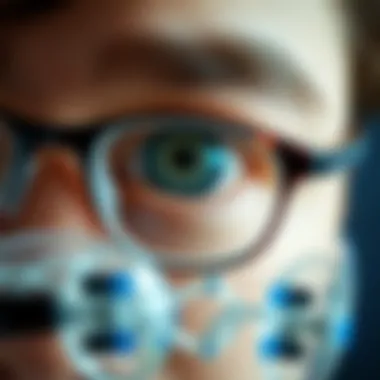
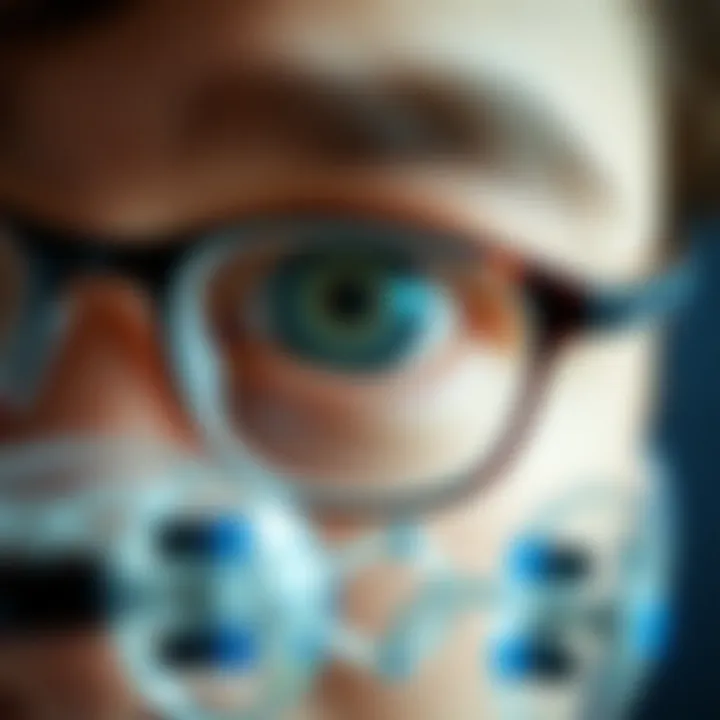
Eyeglasses and Contact Lenses
Types of lenses
Eyeglasses and contact lenses come in various types, each crafted to cater to different levels of myopia. Standard single-vision lenses correct nearsightedness effectively, while bifocal and multifocal options address presbyopia in conjunction with myopia as individuals age. A unique feature of progressive lenses is that they offer a smooth transition between multiple focal points, making them increasingly popular for older patients.
The adaptability of contact lenses, whether they’re soft, hard, or specialty designs such as toric lenses for astigmatism, provides a versatile choice for many users. This flexibility can be beneficial, as it allows individuals to select the option that best suits their lifestyle and visual need.
Advantages and limitations
Eyeglasses are quick to use and require minimal maintenance, a major advantage for those who appreciate simplicity. They also come with various styles that can be quite fashionable. However, the limitations include susceptibility to fogging, breakage, and peripheral vision issues. Meanwhile, contact lenses offer increased freedom and minimize distortions, but they demand more diligent care to avoid infections and discomfort.
The main takeaway is that each option carries its own set of pros and cons that individuals must weigh against their personal circumstances.
Proper fitting and care
Proper fitting and care for both eyeglasses and contact lenses cannot be overstated. A good fit ensures optimal vision correction and comfort, which is crucial for consistent wear. For eyeglasses, adjustments of frames can usually be made by an optometrist to maintain a snug fit without pressure.
Contact lenses, on the other hand, require guidance from a professional to assess the shape and health of one’s eyes to avoid complications. Regular check-ups are necessary not only for comfort but for overall eye health. Many people overlook this aspect, but understanding how to care for lenses and their equipment can significantly impact their longevity and effectiveness.
Pharmaceutical Solutions
Atropine use
Atropine has gained attention as a preventative measure against the progression of myopia, particularly in children. The drug works by dilating the pupils and temporarily paralyzing the ciliary muscle, thus reducing the eye's focus ability. This effect shows promise in slowing down the elongation of the eyeball, one of the primary causes of nearsightedness. Despite the effectiveness, potential side effects such as light sensitivity and blurred vision can be drawbacks that families should consider.
Other medicated treatments
In addition to atropine, other medicated treatments, such as the use of low-dose pirenzepine, aim to achieve similar outcomes without some of the side effects associated with stronger drugs. These newer interventions focus on modulating eye growth and preventing myopia's escalation. Their ongoing research and development signal hope for a targeted approach to managing myopia long-term. However, they are still not universally available or as widely studied as traditional options.
Research on efficacy
Research on the efficacy of these pharmaceutical options remains a vital part of advancing treatment. Studies that analyze the long-term impact of both atropine and alternative medications could lead to more tailored methods of treatment. Even though promising data exists, parents and patients must be apprised of the continuing changes in protocol and consensus in the field of myopia treatment.
Orthokeratology
Mechanism of action
Orthokeratology is a non-surgical treatment for myopia that involves the use of specially designed rigid contact lenses worn overnight. These lenses reshape the cornea to improve vision temporarily. The mechanism behind this is fascinating: patients remove the lenses in the morning and experience clearer vision without the need for corrective eyewear for the entire day. This option not only helps those who cannot tolerate glasses or conventional contacts during the day but also assists in slowing down the progression of myopia, particularly in children.
Patient suitability
This treatment is not for everyone, and patient suitability hinges on various factors. Ideal candidates are usually children or teens whose myopia is on the escalate, as well as adults who prefer not to wear glasses during the day. However, individuals with other eye conditions or those who do not adhere to proper lens care might not be suitable candidates. Thus, a thorough evaluation by an optometrist is essential.
Long-term effects
The long-term effects of orthokeratology warrant careful consideration. While many patients experience stable vision during the day, there can be potential risks like corneal thinning or infection if lenses are not maintained correctly. Additionally, patients often need follow-up visits to ensure that the prescribed lens is still effective and the cornea remains healthy. The overall promise, though, is a more functional way of managing myopia without the dependency on daytime corrective lenses.
In summary, conventional treatment approaches lay a fundamental groundwork for tackling short sightedness, equipping individuals with choices tailored to their needs. Whether through glasses, contact lenses, pharmaceutical treatments, or orthokeratology, the options enable many to achieve clearer vision, thus significantly enhancing their quality of life.
Surgical Interventions
Surgical interventions have evolved significantly over the years, presenting a viable option for individuals seeking to correct short sightedness, also known as myopia. With conventional methods sometimes falling short on effectiveness or comfort, surgeries provide alternative pathways to achieving clearer vision. These advances not only enable a reduction in dependency on glasses and contact lenses but also usher in lifetimes of clearer sight. Making informed decisions about surgical options is pivotal for both patients and practitioners, ensuring the best outcomes based on individual needs and preferences.
Refractive Surgery Options
LASIK overview
LASIK, or Laser-Assisted In Situ Keratomileusis, has gained a reputation as a leading choice among those looking to address myopia. The key characteristic of LASIK is its minimally invasive nature, which appeals to many patients seeking quick recovery and immediate improvement in vision. The procedure involves reshaping the cornea using a precise laser, which adjusts how light enters the eye. Patients often experience very little pain during and after the surgery and can usually return to their normal activities within a day.
One unique feature of LASIK is its capability to correct high levels of myopia, making it suitable for many individuals with varying degrees of visual impairment. For many, the advantages of reduced dependence on corrective eyewear, coupled with enhanced quality of life, make LASIK a highly beneficial option. However, it’s essential to note that not everyone is an ideal candidate; individuals with certain eye conditions or diseases might not be eligible for this surgery.
PRK vs LASIK
When discussing surgical options, it's important to compare PRK (Photorefractive Keratectomy) with LASIK. While both procedures aim to correct refractive errors, they differ in their approach and recovery times. PRK involves the removal of the outer layer of the cornea before reshaping it with a laser, whereas LASIK creates a flap to access the inner layers of the cornea.
A notable characteristic of PRK is that it can be more suitable for those with thinner corneas who might not qualify for LASIK. The initial recovery tends to be longer for PRK patients, and they may experience a bit more discomfort right after the procedure. Despite this, many appreciate PRK for its potentially lower risks associated with flap complications that can arise in LASIK. Both methods provide valuable paths in the journey of myopia correction, and understanding the differences ensures that patients make informed choices.
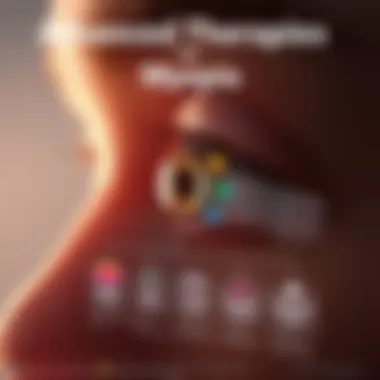
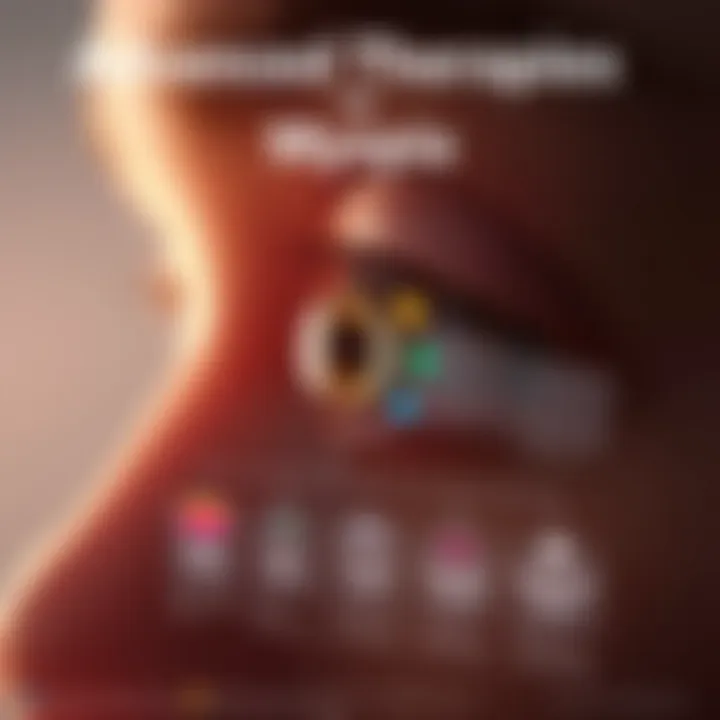
Risks and benefits
Understanding the risks and benefits is crucial when considering any surgical option. Refractive surgeries like LASIK and PRK can significantly improve vision, and the majority of patients report satisfaction with their results. However, it is wise to consider the potential downsides, such as the risk of dry eyes, glare, or halos during night-time driving.
A key benefit of these procedures is the ability to reduce or eliminate the need for glasses or contact lenses, enhancing overall convenience and lifestyle. That said, individuals must weigh these benefits against the possible complications which, while generally rare, can pose significant challenges for those who experience them. Consulting with an experienced ophthalmologist can help clarify these risks and address any concerns before proceeding.
Lens Replacement Surgery
Lens replacement surgery offers another innovative approach for myopia correction. Unlike conventional cataract surgery designed primarily for older adults, this procedure serves younger populations with high degrees of refractive errors who may have exhausted other options.
Procedure description
In lens replacement surgery, the eye's natural lens is removed and replaced with an artificial lens, known as an intraocular lens (IOL). The procedure is typically performed under local anesthetic, ensuring patient comfort while allowing for an efficient and relatively quick recovery.
One enticing feature of this surgery is the capacity to correct not just myopia, but also other refractive errors like hyperopia and astigmatism. The adaptability of IOLs allows for tailoring the lenses to fit patients' specific vision needs. While many appreciate this capacity for customization, potential downsides include the necessity for further surgeries should the lens shift or become misaligned.
IOL types
The types of intraocular lenses available can vary based on the individual’s vision requirements. Monofocal lenses provide clear vision at a single distance, while multifocal lenses allow for different focal points, enhancing flexibility for patients.
The uniqueness of multifocal IOLs is their design to cater to several types of vision issues simultaneously, making them attractive for those who also desire improved near or intermediate vision. However, while many enjoy the benefits, some report visual disturbances like halos, especially in low-light scenarios, making it critical for individuals to consider their daily habits and expectations when choosing lens types.
Candidacy and outcomes
Evaluating candidacy and outcomes is paramount in determining if lens replacement surgery is the right fit. Candidates typically include those with moderate to high myopia who may not be suited for traditional laser corrective surgery. Key aspects to consider include overall eye health, expectations regarding post-surgery vision, and any other medical issues that might complicate the recovery process.
Outcomes can vary widely, with many patients achieving significant improvements in vision, often within a matter of days. Nevertheless, appropriate candidacy selection is essential to help minimize the risks of complications and enhance the chances of a successful surgery. Those weighing this option should engage in thorough discussions with their eye care professionals to align on realistic outcomes and post-operative care.
"It’s important to approach any surgical option with both excitement and caution, seeking clarity and understanding along the way." - Expert Opinion
Innovative Treatments and Research
In the journey of addressing myopia, innovative treatments and research play a pivotal role. Short sightedness is not just a visual inconvenience; it can lead to more severe eye conditions such as glaucoma, cataracts, and even retinal detachment. As such, staying ahead with emerging strategies enhances the quality of life and could alter the trajectory of treatment. Understanding these forward-thinking interventions can make a significant difference to manage this common yet complex condition better, revealing paths that might not have been previously considered.
Myopia Control Methods
Dual-focus lenses
The introduction of dual-focus lenses represents a notable leap forward in our approach to managing myopia. These lenses, designed with two focal points, provide a unique way to address the condition by allowing clearer vision at both near and far distances. The key characteristic of these lenses is their aspheric design, which has been shown to slow the progression of myopia in children and adolescents. This is crucial considering how rapidly childhood myopia is increasing globally.
One of the unique features of dual-focus lenses is their ability to send different visual signals to different regions of the retina. This aspect offers a beneficial alternative to traditional single-vision lenses, giving physicians and patients another effective tool in preventing the worsening of myopia. The downside? While evidence supports their effectiveness, some users may experience adaptation periods, and they aren’t a perfect fit for everyone.
Specialized contact lenses
Specialized contact lenses, including orthokeratology (Ortho-K) and multifocal contacts, have emerged as impactful options for myopia management. These lenses cater primarily to those who prefer the convenience of contacts over glasses, providing a comfortable fit without compromising on effectiveness. The main advantage of specialized contact lenses lies in their ability to reshape the cornea overnight in the case of Ortho-K lenses, allowing wearers clear vision through the day without the need for spectacles or standard contacts.
A unique feature of these lenses is their design, which moderates light entry to the eye, effectively controlling myopic progression. While they can be more costly and require proper care and hygiene practices, the benefits often outweigh these concerns for many patients seeking a more active lifestyle without visual aids.
Patient feedback and studies
Patient feedback serves as a crucial element in the constant evolution of myopia treatments. Engaging with individuals who have gone through various treatment options yields invaluable insights on effectiveness, comfort, and long-term satisfaction. The importance of this feedback cannot be overstated; it shapes future research directions and helps refine existing methodologies.
Studies conducted on patient experiences highlight the effectiveness of different interventions and often reflect broader trends in treatment needs. Some participants have reported a significant reduction in symptoms like eye strain or discomfort, emphasizing the positive impacts these innovations can bring. However, it’s important to note that experiences vary widely, and ongoing study is essential to enhance treatment outcomes.
Emerging Technologies
Virtual reality applications
Virtual reality technology has found its way into the realm of eye care, offering intriguing possibilities for myopia assessment and correction. This technology is particularly beneficial because it allows for engaging and immersive experiences that can help users train their eyes. For instance, VR applications can simulate various visual environments, allowing practitioners to gauge a patient’s adaptability and readiness for certain treatments in a controlled setting.
One distinctive feature of this approach is that it brings a variety of stimuli into the patient’s routine, which could positively influence their visual development. This method is still in its nascent stages, but preliminary results suggest it might prove to be an engaging way to manage myopia, particularly in the younger demographic. However, as with any innovative tech, more robust studies are needed to unpack the efficacy and feasibility of this method long-term.
Genetic therapies
The exploration of genetic therapies represents one of the most exciting frontiers in myopia treatment. As we delve into the genetic underpinnings of this condition, researchers are uncovering potential avenues for intervention that targets the biological basis of myopia. The key characteristic of these therapies is their tailored approach, which could one day result in personalized treatments based on an individual's genetic predisposition.
While genetic therapies hold promise, they also come with complexities and ethical considerations. The unique feature of this approach is its potential for permanent correction, which could revolutionize how we treat myopia, moving away from symptomatic treating towards a more definitive solution. However, the long-term safety and effectiveness are still in the research phases.
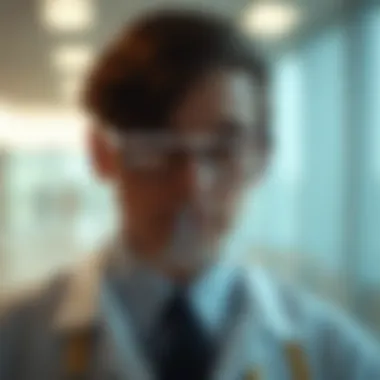
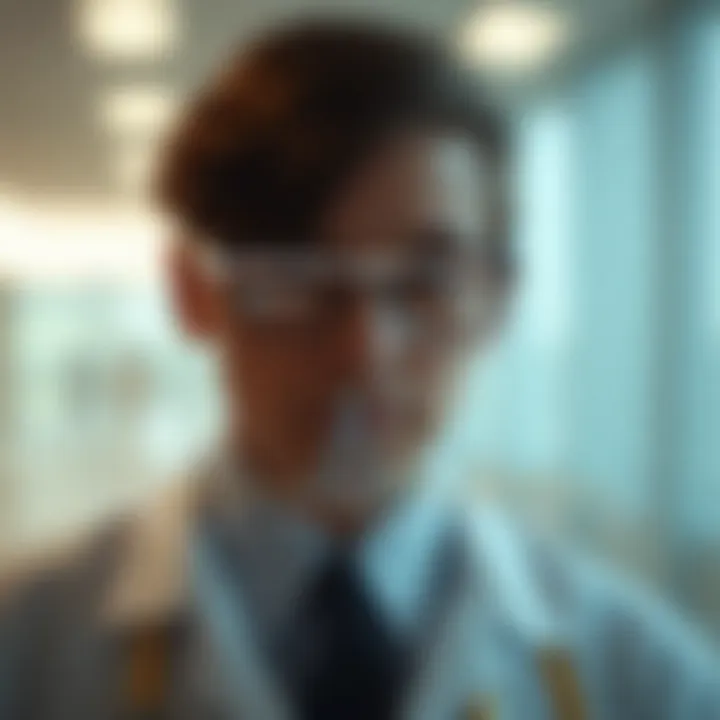
Technological advancements in diagnostics
Lastly, advancements in diagnostic technology have transformed how we understand and treat myopia. Cutting-edge imaging techniques, such as optical coherence tomography (OCT), allow professionals to analyze the eye’s structure with unprecedented detail, providing deeper insights into myopia progression and its causes.
These advancements are beneficial as they enable earlier and more accurate diagnoses. The unique feature of modern diagnostic tools is their ability to integrate with treatment strategies, facilitating tailored approaches. However, the potential drawback is associated costs and the necessity for training to properly utilize these complex systems.
In summary, focusing on innovative treatments and research paves the way for practical solutions against myopia that can radically improve quality of life and visual health. The exploration of new methodologies, backed by robust feedback and studies, paves the path for a brighter vision for many individuals as we tackle short sightedness.
Lifestyle and Preventative Measures
When it comes to short sightedness, or myopia, taking proactive steps through lifestyle and preventive measures can play a pivotal role in managing and potentially reducing its impact. This section digs into the various aspects of eye care practices, nutritional considerations, and environmental factors that collectively contribute to eye health and overall well-being.
Eye Care Practices
Importance of regular eye exams
Regular eye exams serve as a crucial cornerstone in the management of short sightedness. These check-ups not only help in detecting myopia but also measure its progression over time. Regular assessments can lead to timely interventions to address worsening sight. The key characteristic of these exams is their preventive nature, catching problems before they snowball into larger issues. For individuals of all ages, especially children, these exams can be a beneficial choice. They help in customizing vision plans based on personal needs. One unique feature of regular eye exams is the use of advanced imaging techniques, which provide detailed insights into the health of the retina and optic nerve. The advantage is clear: early detection can lead to better outcomes and potentially slow down the progression of myopia.
Proper lighting for reading
Proper lighting during reading can significantly influence eye comfort and health, especially for those susceptible to myopia. It reduces strain on the eyes, which can exacerbate myopic conditions. Optimal illumination enhances visual clarity and ease, making reading a more enjoyable experience. Notably, using natural light is often regarded as the most beneficial for the eyes, as it minimizes glare and enhances contrast. A unique feature of proper lighting includes the use of task lighting, which focuses light where it is needed most. However, poor lighting conditions can lead to fatigue and visual discomfort, so choosing the right light source assists in maintaining eye health while engaged in reading or studying activities.
Screen time management
In our technology-driven world, managing screen time is essential, particularly for those at risk of myopia. Prolonged exposure to screens can lead to digital eye strain, characterized by dryness, fatigue, and blurred vision. The key characteristic of screen time management is the application of the 20-20-20 rule, which encourages individuals to take a break every twenty minutes by looking at something twenty feet away for at least twenty seconds. This simple habit helps reduce fatigue and maintains better vision. A unique aspect of managing screen time involves being disciplined about device use, especially for children, who are often more vulnerable to the impacts of excessive screen exposure. The advantages include preserving eye comfort and potentially halting the progression of myopia over time.
Nutritional Considerations
Vitamins and eye health
Nutrition plays a foundational role in maintaining eye health, where vitamins specifically tailored for the eyes can be incredibly advantageous. Key vitamins such as A, C, and E, along with minerals like zinc, contribute to better vision and may protect against conditions like myopia. The beneficial aspect of these vitamins lies in their antioxidant properties, which combat oxidative stress that can harm retinal cells. A unique feature of focusing on vitamins for eye health is the incorporation of foods rich in these nutrients, such as carrots for vitamin A or citrus fruits for vitamin C. The challenge is ensuring adequate intake in modern diets, but with conscious choices, the advantages can lead to improved eye resilience and function.
Dietary recommendations
Dietary recommendations to support eye health encompass eating a balanced diet rich in whole foods, including leafy greens, nuts, and fish. Foods high in omega-3 fatty acids, such as salmon, are particularly beneficial for ocular health and may help reduce the risk of degenerative eye diseases, including myopia. Notably, the unique aspect of dietary recommendations is the emphasis on whole foods over processed options, which often lack vital nutrients. The consistent intake of these foods can provide long-lasting effects on vision health, paving the way for a proactive approach against myopia's progression. However, the drawback can be the need for lifestyle adjustments in eating habits, which may take time.
Impact of hydration on vision
Hydration plays a subtle yet essential role in maintaining proper eye function. Dehydration can lead to dry eyes, which is a common issue for those who spend a lot of time reading or using screens. Keeping hydrated is particularly important, as proper fluid levels facilitate clearer vision and comfort for the eyes. The significant characteristic here is that maintaining adequate hydration can influence tear film stability, which is vital for eye health. A unique feature of focusing on hydration is understanding that it's not just about drinking water; it's also about consuming hydrating foods like fruits and vegetables. The advantage is that improved hydration may lead to enhanced visual comfort, potentially benefiting those dealing with or at risk for myopia.
Environmental Factors
Outdoor activity and myopia prevention
Engaging in outdoor activities has been associated with a lower risk of developing myopia. Natural light exposure and the opportunity to focus on distant objects when outdoors may strengthen the eye's natural focusing ability. The key characteristic of outdoor activities is their ability to encourage children and adults to explore different distances, which is beneficial for eye development. A unique feature of this approach is the social and physical benefits that come alongside outdoor activities, such as increased coordination and interaction with peers. The main advantage is that regular outdoor time can be a simple, enjoyable way to support eye health.
Impact of urban environments
Urban environments can significantly influence the prevalence of myopia due to factors such as limited green space and an increased focus on indoor activities. The characteristic of this impact is multifaceted; children raised in cities often spend more time indoors and less time engaged in outdoor play. A unique feature of this relationship is the blend of psychological and physical factors, whereby urbanization can confine individuals within limited visibilitiy ranges. The challenges lie in combating these constraints by promoting local outdoor activities to enrich visual health.
Role of family history and genetics
Family history and genetics play a crucial role in determining an individual's likelihood of developing short sightedness. If one or both parents have myopia, their children are more predisposed to develop it as well. The characteristic of this factor is its inherent nature; genetics cannot be changed, yet understanding one's family history can lead to proactive measures in eye care. The unique aspect here is the potential for genetic counseling, where families can gain insights into their predispositions and adjust lifestyle factors accordingly. The main advantage is that by being aware of genetic susceptibilities, individuals can make informed decisions about their eye health and preventive measures.
Ending
As this article draws to a close, it becomes clear that grappling with short sightedness, or myopia, encompasses a multifaceted landscape of treatment options. This topic is not only relevant for those directly experiencing myopia but also for eye care professionals, researchers, and educators who have a stake in ensuring optimal eye health and well-being.
The Future of Myopia Treatment
Current trends in research
Current trends in myopia treatment research highlight the integration of innovative methodologies and enhanced understandings of physiological responses to treatment. Researchers are now investigating the role of light exposure and its impact on eye development, identifying how these factors could be manipulated to slow myopia progression. One key characteristic of this trend is its focus on preventive rather than reactive measures—aiming to address myopia before it becomes a significant concern. This proactive slant is a significant benefit because it opens doors to solutions that not only treat the symptoms but may also reduce the overall prevalence of myopia in future generations. A unique feature of this research includes the examination of environmental influences, which sheds light on how lifestyle adjustments can also play a role—this could lead to strategies that are sustainable and easy to adopt.
Integrating technology in treatment
The use of technology in treating myopia is transforming patient care and treatment outcomes. Telemedicine and online consultations have risen sharply, allowing patients from various backgrounds to access expert opinions without the barriers of travel and appointment availability. The speed and convenience offered by technology make it a popular choice in myopia treatment strategies today. New software and apps that assist with self-monitoring of vision are being developed to encourage individuals to track their eye health actively. This facilitates earlier intervention and fosters responsible eye care. However, one must also consider the potential downside; over-reliance on technology can lead some to overlook the importance of in-person assessments which provide critical, comprehensive eye checks.
Patient-centered care approaches
Patient-centered care approaches have transformed how myopia is managed. Recognizing that each individual presents unique needs and histories means that treatments are increasingly tailored. Patient engagement in decision-making and preference consideration has become a hallmark of effective care. This approach not only improves compliance but also enhances satisfaction with the treatment process. A notable advantage of this strategy is that it fosters a partnership between patient and clinician, ensuring that the solutions are not only medically sound but also personally acceptable. However, it can also present challenges. Ensuring that patients fully understand their options and feel empowered to make decisions can depend heavily on the skill and patience of the eye care professional.
Final Thoughts
In sum, the journey through myopia treatment options reveals a tapestry woven with innovation, research, and a growing understanding of personalized care. As researchers continue to unearth new findings, and technology advances further into the realm of medical application, the future looks promising for those affected by short sightedness. As we turn our gaze forward, the significance of informed, tailored treatment plans resonates louder than ever, ensuring that individual needs remain at the heart of myopia management.



